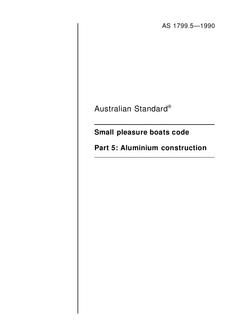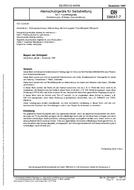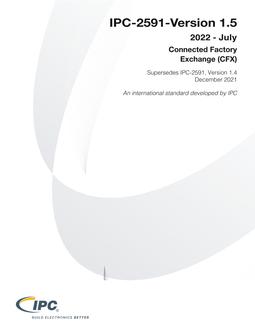
UL 61010-1 PDF
Original price was: $710.00.$426.00Current price is: $426.00.
Safety Requirements for Electrical Equipment for Measurement, Control, and Laboratory Use – Part 1: General Requirements
| Published by | Publication Date | Number of Pages |
| UL | 05/11/2012 | 160 |
UL 61010-1 – Safety Requirements for Electrical Equipment for Measurement, Control, and Laboratory Use – Part 1: General Requirements
Please note: All interim revisions for this edition available at time of your purchase will be included.
Electrical Equipment For Measurement, Control, and Laboratory Use; Part 1: General Requirements
UL 61010-1
This part of IEC 61010 specifies general safety requirements for the following types of electrical equipment and their accessories, wherever they are intended to be used.a) Electrical test and measurement equipment
This is equipment which by electromagnetic means tests, measures, indicates or records one or more electrical or physical quantities, also non-measuring equipment such as signal generators, measurement standards, power supplies for laboratory use, transducers, transmitters, etc. NOTE 1 This includes bench-top power supplies intended to aid a testing or measuring operation on another piece of equipment. Power supplies intended to power equipment are within the scope of IEC 61558 (see 1.1.2 h)).
This standard also applies to test equipment integrated into manufacturing processes and intended for testing manufactured devices. NOTE 2 Manufacturing test equipment is likely to be installed adjacent to and interconnected with industrial machinery in this application.
b) Electrical industrial process-control equipment
This is equipment which controls one or more output quantities to specific values, with each value determined by manual setting, by local or remote programming, or by one or more input variables.
c) Electrical laboratory equipment
This is equipment which measures, indicates, monitors, inspects or analyses materials, or is used to prepare materials, and includes in vitro diagnostic (IVD) equipment.
This equipment may also be used in areas other than laboratories; examples include self-test IVD equipment to be used in the home and inspection equipment to be used to check people or material during transportation.
1.1.2 Equipment excluded from scope
This standard does not apply to equipment within the scope of:
a) IEC 60065 (Audio, video and similar electronic apparatus);
b) IEC 60204 (Safety of machinery – Electrical equipment of machines);
c) IEC 60335 (Household and similar electrical appliances);
d) IEC 60364 (Electrical installations of buildings);
e) IEC 60439 (Low-voltage switchgear and controlgear assemblies);
f) IEC 60601 (Medical electrical equipment);
g) IEC 60950 (Information technology equipment including electrical business equipment, except as specified in 1.1.3);
h) IEC 61558 (Power transformers, power supply units and similar);
i) IEC 61010-031 (Hand-held probe assemblies);
j) IEC 61243-3 (Live working – Voltage detectors – Part 3: Two-pole low-voltage type).
1.1.3 Computing equipment
This standard applies only to computers, processors, etc. which form part of equipment within the scope of this standard or are designed for use exclusively with the equipment.NOTE Computing devices and similar equipment within the scope of IEC 60950 and conforming to its requirements are considered to be suitable for use with equipment within the scope of this standard. However, some of the requirements of IEC 60950for resistance to moisture and liquids are less stringent than those in this standard (see 5.4.4 second paragraph)).1.1.4DV Addition of the following referencing the National Electrical Code and the Canadian Electrical Code:
This standard applies to equipment:
a) To be employed in accordance with ANSI/NFPA 70, National Electrical Code (NEC);
b) Designed to comply with the general requirements of CAN/CSA C22.2 No. 0 and to be installed in accordance with the Canadian Electrical Code (CEC), Part I, CSA C22.1; or
c) Both (a) and (b).
1.2 Object
The purpose of the requirements of this standard is to ensure that HAZARDS to the OPERATOR and the surrounding area are reduced to a tolerable level.Requirements for protection against particular types of HAZARD are given in Clauses 6 to 13, as follows:
a) electric shock or burn (see Clause 6);
b) mechanical HAZARDS (see Clauses 7 and 8);
c) spread of fire from the equipment (see Clause 9);
d) excessive temperature (see Clause 10);
e) effects of fluids and fluid pressure (see Clause 11);
f) effects of radiation, including lasers sources, and sonic and ultrasonic pressure (see Clause 12);
g) liberated gases, explosion and implosion (see Clause 13).
Requirements for protection against HAZARDS arising from REASONABLY FORESEEABLE MISUSE and ergonomic factors are specified in Clause 16.RISK assessment for HAZARDS or environments not fully covered above is specified in Clause 17. NOTE Attention is drawn to the existence of additional requirements regarding the health and safety of labour forces.
1.2.2 Aspects excluded from scope
This standard does not cover:a) reliable function, performance, or other properties of the equipment not related to safety; b) effectiveness of transport packaging; c) EMC requirements (see the IEC 61326 series); d) protective measures for explosive atmospheres (see the IEC 60079 series).
1.3 Verification
This standard also specifies methods of verifying that the equipment meets the requirements of this standard, through inspection, TYPE TESTS, ROUTINE TESTS, and RISK assessment.
1.4 Environmental conditions
1.4.1 Normal environmental conditions
This standard applies to equipment designed to be safe at least under the following conditions: a) indoor use; b) altitude up to 2 000 m; c) temperature 5°C to 40°C; d) maximum relative humidity 80% for temperatures up to 31°C decreasing linearly to 50% relative humidity at 40°C; e) MAINS supply voltage fluctuations up to 10% of the nominal voltage; f) TRANSIENT OVERVOLTAGES up to the levels of OVERVOLTAGE CATEGORY II;
NOTE 1 These levels of transient overvoltage are typical for equipment supplied from the building wiring.
g) TEMPORARY OVERVOLTAGES occurring on the MAINS supply.
h) applicable POLLUTION DEGREE of the intended environment (POLLUTION DEGREE 2 in most cases).NOTE 2 Manufacturers may specify more restricted environmental conditions for operation; nevertheless the equipment must be safe within these normal environmental conditions.
1.4.2 Extended environmental conditionsThis standard applies to equipment designed to be safe not only in the environmental conditions specified in 1.4.1, but also in any of the following conditions as RATED by the manufacturer of the equipment: a) outdoor use; b) altitude above 2 000 m; c) ambient temperatures below 5°C or above 40°C; d) relative humidity above the levels specified in 1.4.1; e) MAINS supply voltage fluctuations exceeding 10% of the nominal voltage; f) WET LOCATION; g) TRANSIENT OVERVOLTAGES up to the levels of OVERVOLTAGE CATEGORY III or IV (see Annex k).
Product Details
- Edition:
- 3
- Published:
- 05/11/2012
- Number of Pages:
- 160
- Note:
- This product is unavailable in Ukraine, Russia, Belarus



